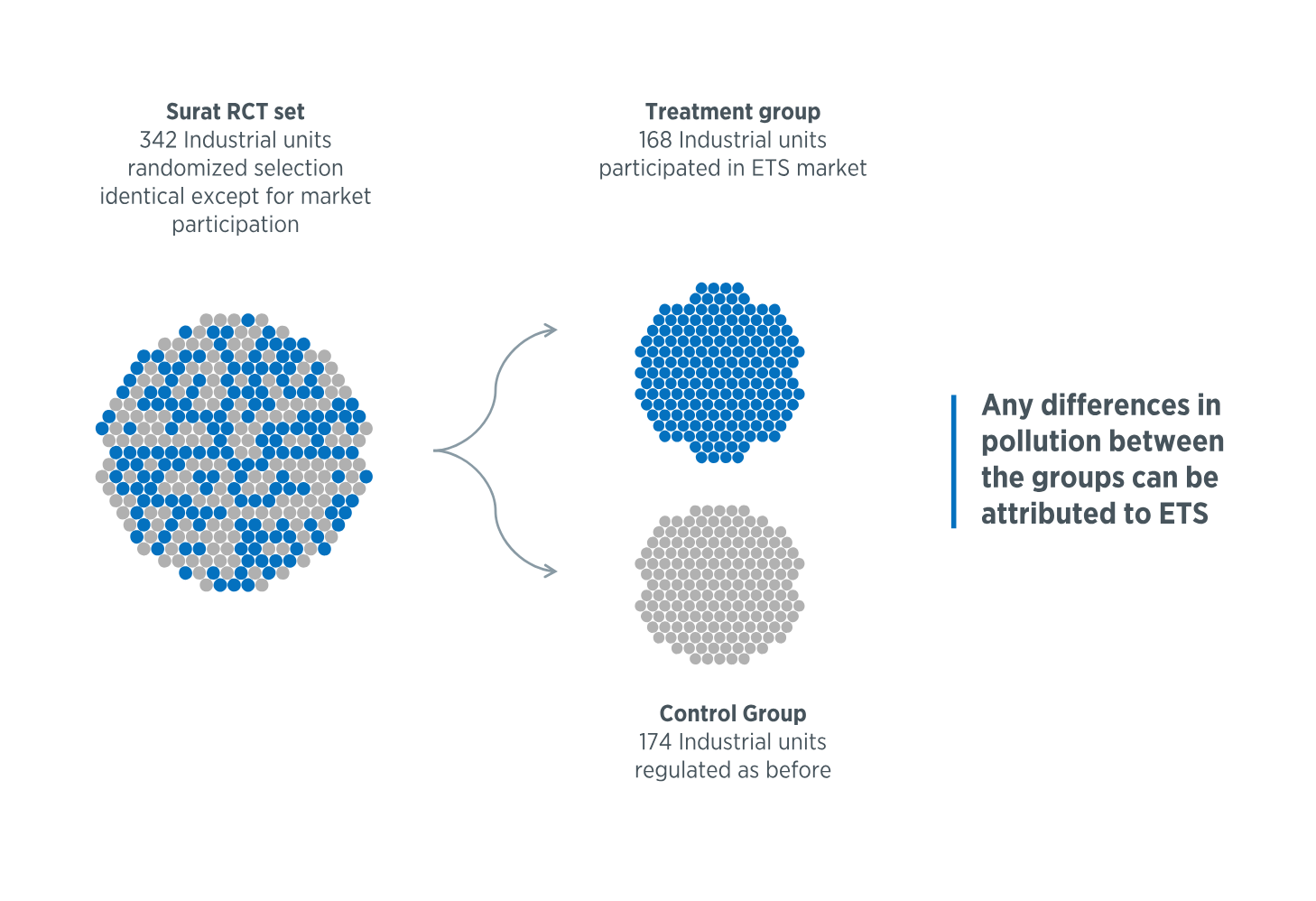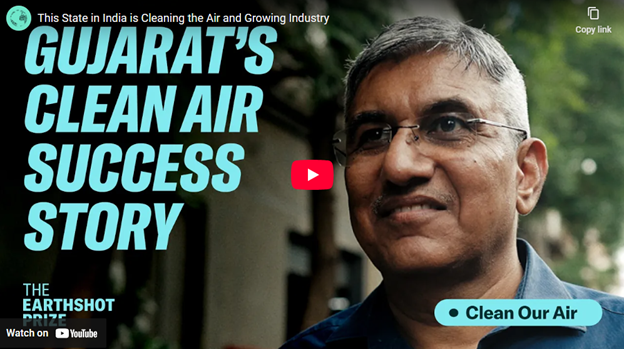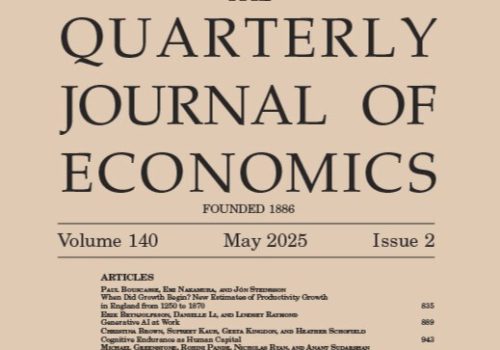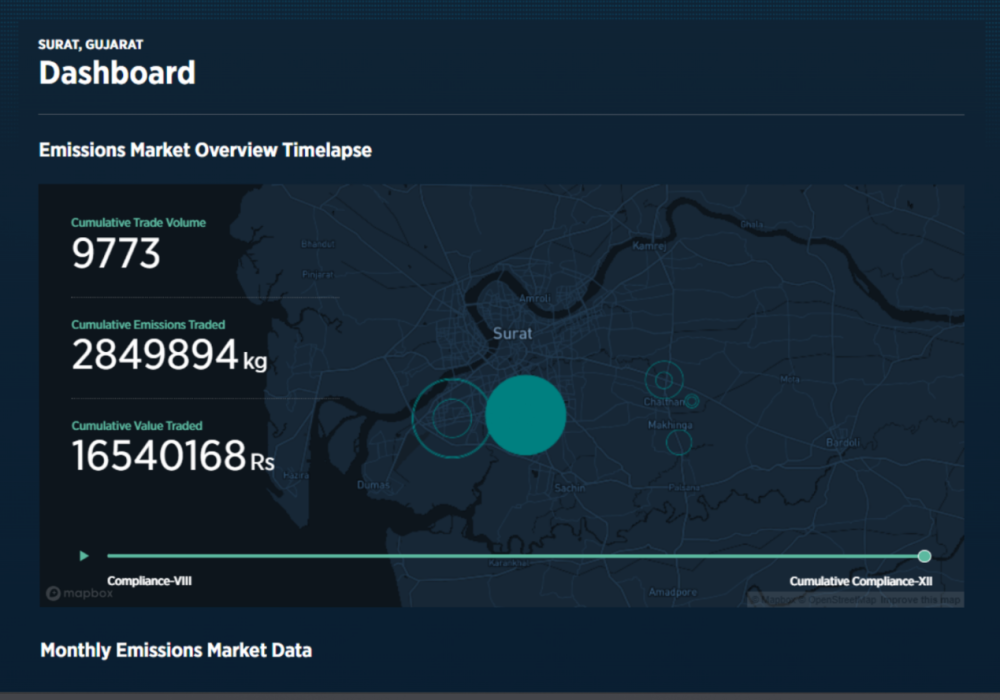Evidence from India
The Problem

A Market-Based Approach

The Pilot
The pilot was conducted as an experiment, so the results from facilities participating in the market could be compared to a control group of facilities following existing, conventional air pollution rules.
Win #1: Eliminate Non-Compliance
Facilities outside of the market following conventional rules didn’t comply with the rules about a third of the time.
Win #1: Eliminate Non-Compliance
With the market’s more flexible approach, only 1% of facilities didn’t comply.
In other words, they held enough permits to cover their emissions—99% of the time.
Win #2: Reduce Pollution
The researchers also recorded the amount of pollution facilities following conventional rules were emitting.
Win #2: Reduce Pollution
And compared that to the facilities in the market. Those in the market were emitting 20% to 30% less pollution.
Win #3: Reduce Industry Cost
Which facilities were spending more money to comply? Here’s how much facilities following conventional rules spent to install emissions control technologies.
Win #3: Reduce Industry Cost
Compared to plants in the control group, it cost plants 11% less to comply with the market.
Overall, the market delivered a benefit-to-cost ratio of 215:1 by improving air quality, public health, and industrial efficiency.
Scaling Up

Earthshot Prize Names State of Gujarat a Finalist for Groundbreaking Work

Can Pollution Markets Work in Developing Countries? Experimental Evidence from India









